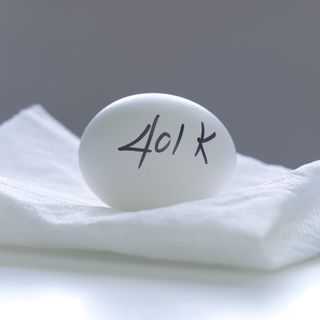

401(k) s are the largest source of funds that most individuals set aside for retirement. Here are some thoughts on questions you should consider.
How do I enroll? If your employer has a retirement plan, such as a 401(k) or a 403b, your Human Resources department should talk about enrolling when you’re hired. If you’ve been there a while, most companies will hold a group meeting with HR and a representative from the plan sponsor. They will go through the highlights of the plan and help you to enroll. There are a couple of things to bear in mind: figure out the company match and take advantage of it; and if there’s no company match, you may want to look at a personal Roth IRA and IRA contributions, before going with your employer’s retirement plan.
Which one: Roth or Traditional IRA? Some employer retirement plans are offering Roth options, so choosing between traditional or Roth to save for retirement is important. In a traditional 401(k), you’re not getting a tax deduction for your pre-tax contributions, but instead are getting a tax deferral. You’ll eventually pay taxes on the money in these accounts funded with pre-tax dollars, when you take withdrawals in retirement. You’ll pay tax on the pre-tax contributions and all of the gains.
For a Roth, you invest post-tax dollars going into the account and won’t be taxed again. Withdrawals in retirement are tax-free for your contributions and your growth. Therefore, do you want to pay the taxes now (on a Roth) or pay taxes during retirement (with a traditional IRA)? If your plan offers a Roth 401(k), it’s wise to put your contributions there because the money will be tax-free after you retire. It also shields your retirement assets from possible future income-tax rate increases.
How much do I contribute? Look at the current IRS contribution limits and the additional contribution limits of your specific company plan. Try to contribute up to the company match in order to max out your employer’s contributions to your retirement savings. You also should consider how much you can afford to contribute based on your monthly budget and cash flow. Once you’ve contributed up to the match, if you’re able to save more for retirement, review your Roth IRA and other tax-free options.
How should I invest? There are many factors to consider. Each person’s situation is different. Consider your age, risk tolerance, investment timeline, other available retirement assets, fees, taxes, and the amount you’re able to contribute, among other factors.
When do I change my investments? Most employer sponsored retirement plan participants never make changes to their investment choices after they enroll! Broad exposure to low-cost index funds and ETFs across multiple asset classes typically work for most investors to withstand market swings. However, you shouldn’t disregard your account for years or decades until retirement. Your specific factors, as well as the available investments within your plan, may change with time. Major life events may also necessitate changes in your investment strategy. Get financial advice and think about making annual adjustments to rebalance your allocations, as needed.
When you save for retirement, start early, be consistent, max out your Roth options first whenever possible and don’t be afraid to ask for help.
Reference: Kiplinger (June 2017) “6 Answers to Your 401(k) Questions”


